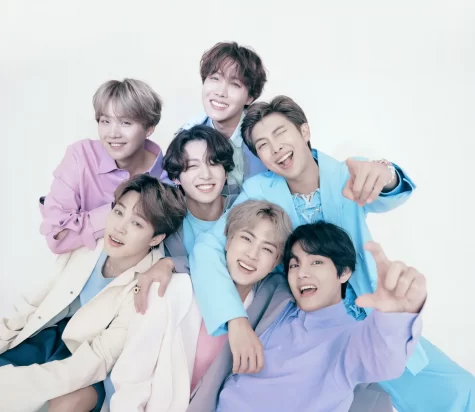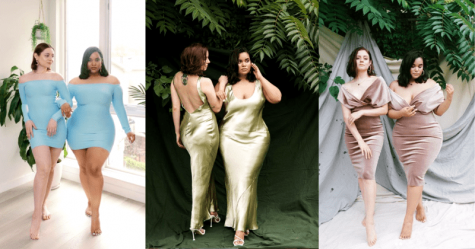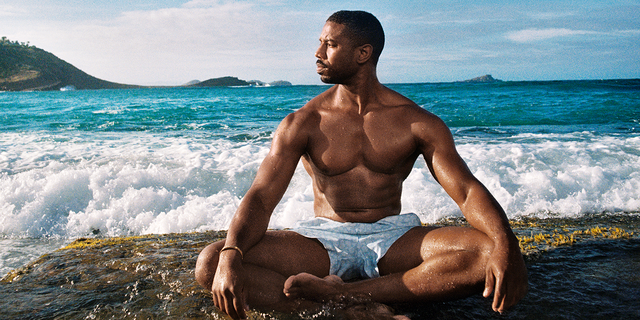In-Depth: Looking Into Modern-Day Male Beauty Standards
On November 8th, 2021, I spent the majority of my time in Journalism slumped over in the 7th-grade girls’ locker commons in utter despair, re-reading and re-phrasing my trio of interview questions. I had decided to write an article regarding how social media affects masculine beauty standards, a topic far out of my comfort zone. Unfortunately, all of my interviews with 6th, 7th, and 8th-grade boys so far had been a disaster.
To me, the questions were simple and fairly easy to answer. So, why did all of my interviews consist of stutters, and “I . . . don’t know . . ?” Were my questions too complex for them? Were they merely anxious about being interviewed? I pinched my nose bridge in embarrassment as I recalled my last interview session, where one especially flushed interviewee sheepishly asked to stop being interviewed. The reason why remained a mystery to me.
Frustrated, I explained my situation to my Journalism advisor, Mr. Meyer. He then suggested that I try interviewing only 8th-grade male students instead, to which I reluctantly agreed. “Maybe it’s not so much the anxiousness of being interviewed,” he later replied. “Your male interviewees might be surprised they were asked this question. They might not know how to answer. Male beauty standards, I think, are still considered a ‘taboo’ subject for everyone.”
I’d already heard enough about the many hidden dangers and risks of male beauty standards. Even worse still, it was a topic that had not yet been spoken about. It was at this moment when I knew that this was an issue that needed to be addressed.
The Definition of Beauty


The Merriam-Webster Dictionary defines beauty as “the qualities in a person or thing that give pleasure to the senses or mind.” The definition of human beauty may vary according to times, places, or cultures. For instance, Korean societies promote a softer type of masculine beauty––clear skin, enlarged eyes, and androgynous figures have risen to great popularity. However, in Western society, the male beauty standard is focused on hyper-masculinity––golden skin, ruggedness, and a muscular physique are considered more desirable.
Media and Pressure
Social media platforms, such as Instagram and Tiktok, reinforce the standard of beauty for men. When teenagers scroll through these platforms, they are frequently exposed to “the ideal” and what attracts the attention of a lot of people, shown through a number of likes and comments. When looking at their own bodies, they can be unsatisfied and unhappy if they don’t embody this ideal.

Different types of social media posts are rising in popularity, especially fitness and beauty posts. Many influencers upload pictures or short videos of themselves hitting the gym or highlighting that they fit the beauty standard. “For the most part, I’d say that it’s about things like body fat percentage, being muscular, and having that stereotypical masculine appearance,” says 8th-grader Jason Dural. “That is part of the whole beauty standard, so I feel that it makes people feel like they don’t fit in. As far as people having different types of body types, I don’t see that as much in social media.” For example, entertainment companies, such as Marvel, always cast strong, muscular men to play the leading protagonists of movies. However, characters who have a different body type tend to play less important roles or serve as comedic relief.
However, some can argue that physical diversity on social media is changing. “As the diversity of our population continues to increase, the way that individuals look at men has changed, in terms of what constitutes beauty or manliness,” says Tray Malloy, the Middle School Boys Counselor. “You see in some of these social media platforms a more diverse definition.”
Different people can interpret these posts in different ways. One person may suddenly develop a set of new insecurities, or another might use this as motivation to work on themselves. Some don’t pay attention at all. “I haven’t had any experience with feeling pressure,” says Dural. “That’s partially because I’m only fourteen. I don’t see myself having to fit into the standard that they have for adult men, who have more freedom to do what they want. I don’t see myself having to fit in.” Regardless, some young men feel the effects and pressure which these types of posts create. “I know a lot of my friends have certain issues with their own height, but I feel like height is just something you can’t control,” says 8th-grader Jayden Desnoyer. “If you’re stressing over that, you shouldn’t.”
It’s easy to forget that these posts may not even be real––some apps are specifically designed to edit faces and add filters, glorifying the original picture.
The Danger of Beauty Standards
Male beauty standards make teenage boys feel unworthy, lose self-confidence, and often lead to serious health problems, such as disordered eating. “I had some serious kidney illness when I was in the 7th or 8th grade,” says Dr. Cochran, 7th-Grade Boys Grade Chair. “One of the major side effects of the treatment was both water retention and gaining weight. I went from being a small, skinny kid to being a small, bigger kid. That really impacted me in high school. The way I eventually started to deal with it was when I started swimming seriously. I started swimming seriously, but I took that too far to the other end. When I left for college, I didn’t have a sense of identity beyond swimming. I was also so wrapped up about body image stuff that I tried to do triathlons and ended overtraining and undereating. I ended up really damaging my right leg, where I had multiple stress fractures. That eventually got me to the weight room, where I’m super happy now. I think it’s the healthiest expression I have, but those little demons are still hanging around back there––they never fully go away.”
Body Positivity for Men?

Recently, the “body positivity” and “body neutrality” movement has dominated social media platforms, especially through Tiktok. Interestingly, nearly all of the “body positivity” content creators are women promoting their messages towards a female audience. To combat female beauty standards, they encourage women to fall in love with their bodies and remind women that they come in many unique shapes, colors, and sizes. Unfortunately, few content creators are doing the same for a male audience. “I would definitely agree that there are more women creators promoting body positivity for women than for men,” says 8th grader Lily Dennard. “ . . . but I would argue that women need it more than men do.”
On the other hand, few truly consider the existence of unrealistic masculine beauty standards. “I think boys don’t think they need the same physique as other boys,” says 8th grader Vikas Reddy. “Most boys aren’t affected by social media as much as females probably are. When boys look at other people’s Instagram posts, they don’t feel jealous, or they don’t feel they need to look that way. They just think that it’s good for the other person.”
Could the lack of talking about this issue lead to it becoming a problem in society? I wondered if Vikas’s answer was the result of the fear of speaking about this topic openly.
Toxic masculinity, another set of societal standards for male behaviors, also causes body image to remain a hidden issue, continuing the vicious cycle. Worrying about body image isn’t considered “masculine.” When men and boys speak about “feminine-sounding” issues, they are made fun of or snapped at. Historically, men have been encouraged not to speak about these topics and have been encouraged to suppress any insecurities that may arise, causing men to fear talking about these subjects and keep to themselves. I think this might be why the boys I interviewed were at such a loss for words––they were uncomfortable.
However, some boys I talked to acknowledge male beauty standards but do not believe the extent is the same for women and men. “I think that the same goes for men, but I don’t find that it goes to the same extent as it does for women,” says Dural. “This is because men don’t seem to go through the same processing, digitally, through things like makeup where they’re [Instagram models] completely altering their appearance to something that’s quite literally impossible for many people.”
The Female Contribution
The biggest surprise to me was the immense amount of pressure women also place on men to fit beauty standards, just as men do for women. As I was scrolling through Tiktok, I suddenly stopped at a short of a teenage girl talking about her “type.” She stated that she liked tall guys––at least six feet tall––muscular, blonde, and with dimples. I rolled my eyes at the girl, annoyed by her choice of content––didn’t she understand that this could unlock new insecurities for men? Then, I stopped, suddenly confused. She could just be speaking about her type, which there is nothing wrong with having––everyone is different and gravitates towards different physical looks. This doesn’t necessarily mean that she is putting down men who don’t fit these standards. However, men can interpret the message wrongly and think that—to attract women such as this one—they have to fit these standards. Again, it really depends on the person. Whether they intend to or not, posts like this have an impact on men and teenage boys who feel insecure about themselves. Perhaps, as a solution, we need to speak about beauty less.
Ultimately, we all need to accept what we can’t change and let the drive for improvement root from within. “As of right now, I know I can get better and I’m still getting better. I’m not going to look like that as a 14-year old,” says Desnoyer. “I could always wish I could, but I’ve already come to accept myself. I can work on it in the weight room! When I work on it, I’m only going to become the best version of myself, and I’ll keep moving on. That’s just really it.”


